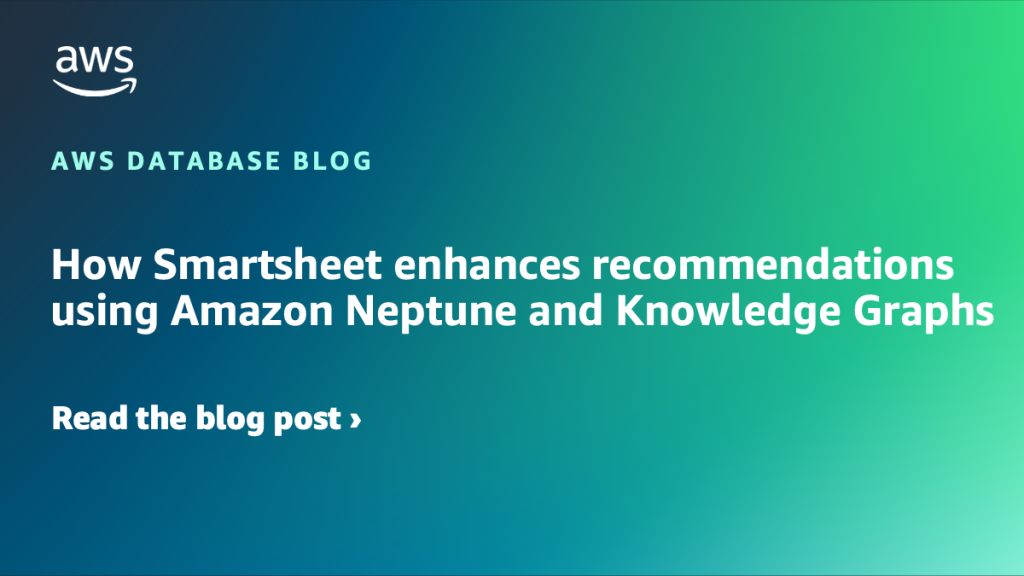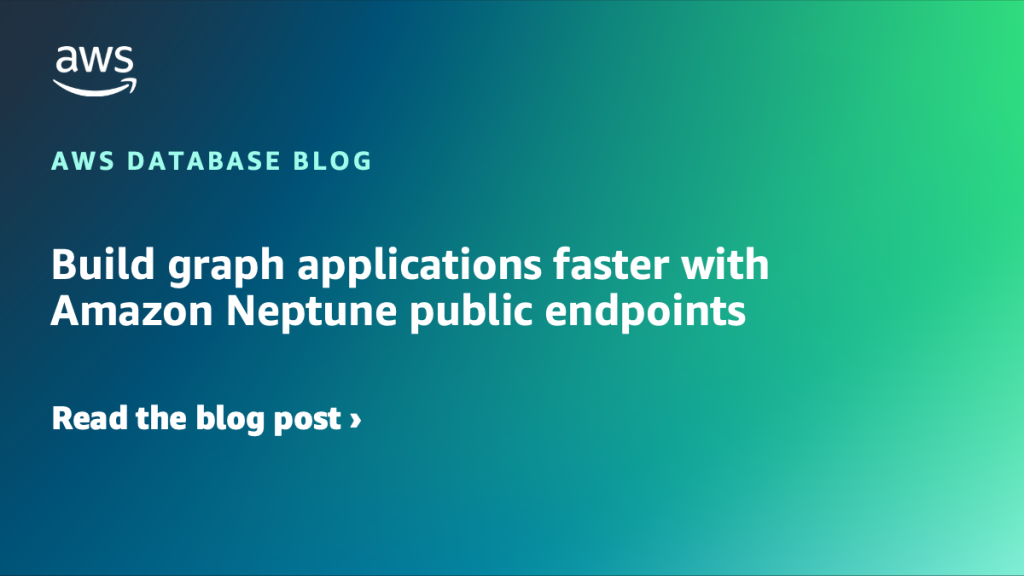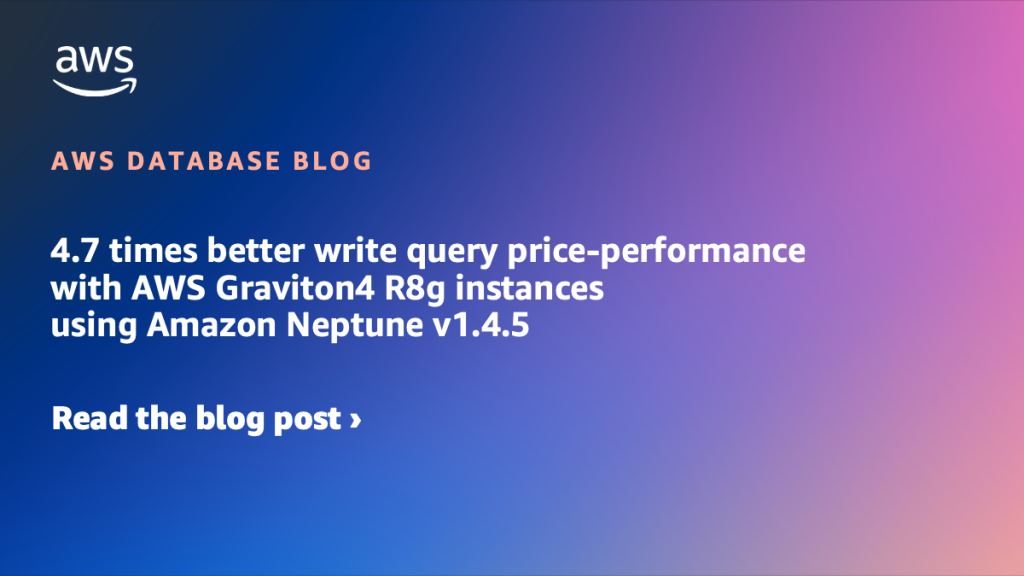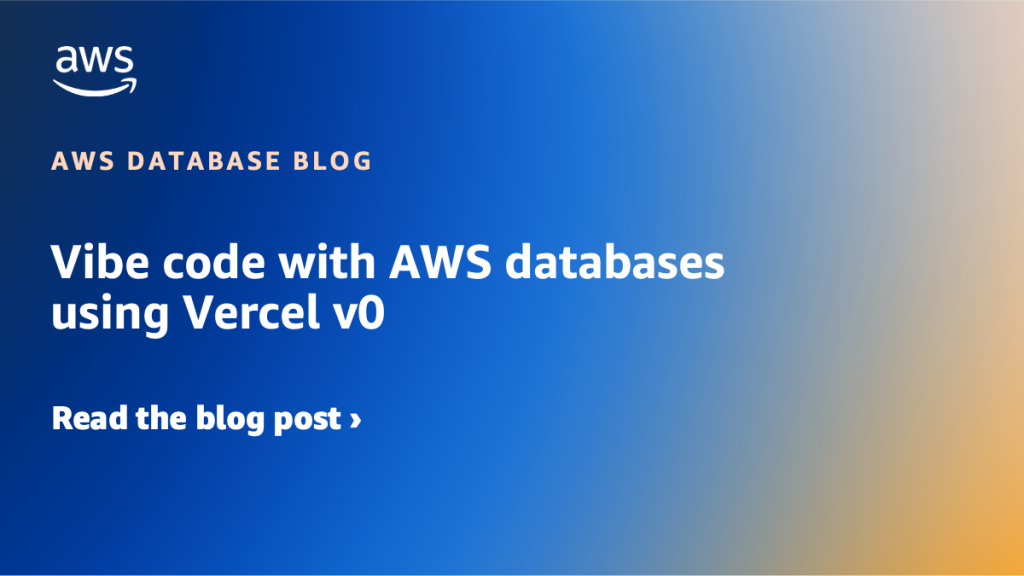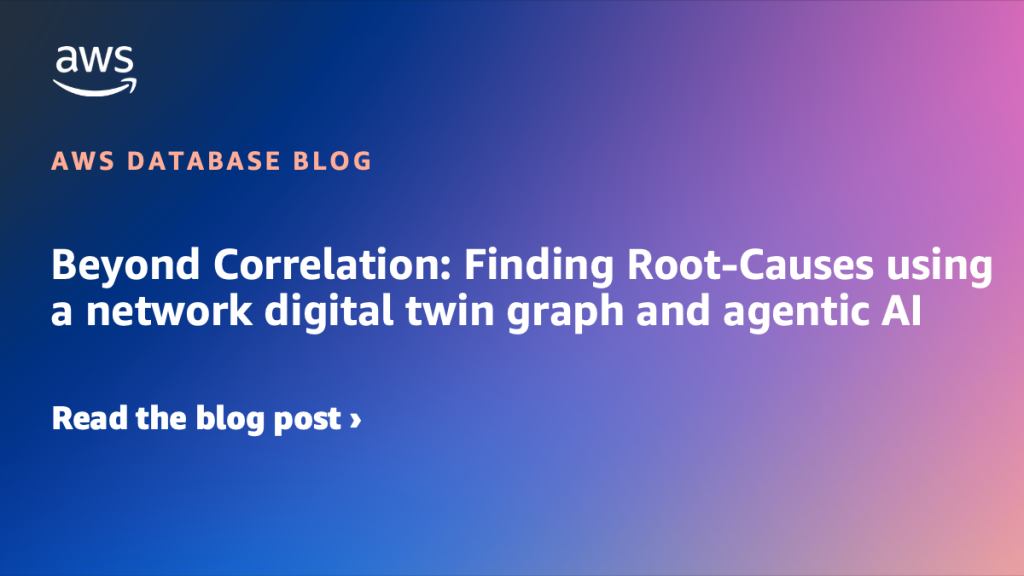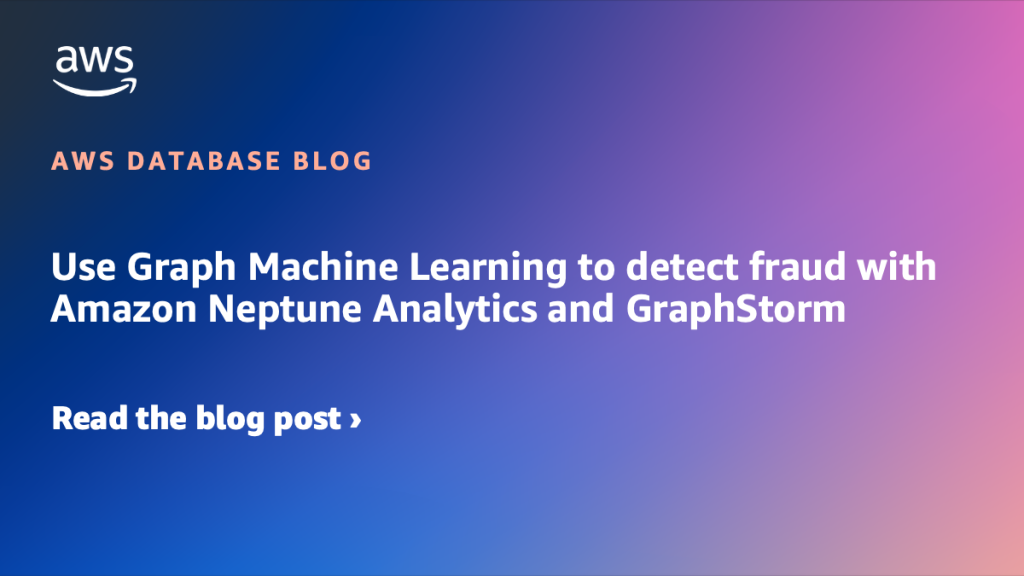AWS Database Blog
Category: Amazon Neptune
How Smartsheet enhances recommendations using Amazon Neptune and Knowledge Graphs
Smartsheet is a leading SaaS-based collaborative work management platform trusted by enterprises worldwide to manage projects, automate workflows, and drive collaboration at scale. In this post, we describe the Smartsheet Knowledge Graph, built in partnership between Smartsheet and AWS. The Smartsheet Knowledge Graph is a unified data model connecting people, content, and work in Smartsheet, representing how users interact with assets, content, and their collaborators.
Build graph applications faster with Amazon Neptune public endpoints
Developing applications on Amazon Neptune Database historically required users setup access into the VPC where it is hosted and use either 3rd party drivers or direct HTTP requests. In this post, we discuss how two key features, public endpoints and the Neptune Data API, solve these common challenges in Amazon Neptune application development. Public endpoints […]
4.7 times better write query price-performance with AWS Graviton4 R8g instances using Amazon Neptune v1.4.5
Amazon Neptune version 1.4.5 introduces engine improvements and support for AWS Graviton-based r8g instances. In this post, we show you how these updates can improve your graph database performance and reduce costs. We walk you through the benchmark results for Gremlin and openCypher comparing Neptune v1.4.5 on r8g instances against previous versions. You’ll see performance improvements of up to 4.7x for write throughput and 3.7x for read throughput, along with the cost implications.
Vibe code with AWS databases using Vercel v0
In this post, we explore how you can use Vercel’s v0 generative UI to build applications with a modern UI for AWS purpose-built databases such as Amazon Aurora, Amazon DynamoDB, Amazon Neptune, and Amazon ElastiCache.
Beyond Correlation: Finding Root-Causes using a network digital twin graph and agentic AI
When your network fails, finding the root cause usually takes hours of investigations, going through correlated alarms that often lead to symptoms rather than the actual problem. Root-cause analysis (RCA) systems are often built on hardcoded rules, static thresholds, and pre-defined patterns that work great until they don’t. Whether you’re troubleshooting network-level outages or service-level degradations, those rigid rule sets can’t adapt to cascading failures and complex interdependencies. In this post, we show you our AWS solution architecture that features a network digital twin using graphs and Agentic AI. We also share four runbook design patterns for Agentic AI-powered graph-based RCA on AWS. Finally, we show how DOCOMO provides real-world validation from their commercial networks of our first runbook design pattern, showing drastic MTTD improvement with 15s for failure isolation in transport and Radio Access Networks.
Use Graph Machine Learning to detect fraud with Amazon Neptune Analytics and GraphStorm
Every year, businesses and consumers lose billions of dollars to fraud, with consumers reporting $12.5 billion lost to fraud in 2024, a 25% increase year over year. People who commit fraud often work together in organized fraud networks, running many different schemes that companies struggle to detect and stop. In this post, we discuss how to use Amazon Neptune Analytics, a memory-optimized graph database engine for analytics, and GraphStorm, a scalable open source graph machine learning (ML) library, to build a fraud analysis pipeline with AWS services.
Explore the new openCypher custom functions and subquery support in Amazon Neptune
In this post, we describe some of the openCypher features that have been released as part of the 1.4.2.0 engine update to Amazon Neptune. Neptune provides developers with the choice of building their graph applications using three open graph query languages: openCypher, Apache TinkerPop Gremlin, and the World Wide Web Consortium’s (W3C) SPARQL 1.1. You can use the guide at the end of this post to try out the new features that are described.
Graph-powered authorization: Relationship based access control for access management
Authorization systems are a critical component of modern applications, yet traditional approaches like role-based access control (RBAC) and attribute-based access control (ABAC) struggle to meet the complex access control requirements of today’s enterprises. In this post, we introduce a relationship-based access control (ReBAC) as an alternative for enterprise scale authorization. We explore how the proposed […]
Zupee implements Amazon Neptune to detect Wallet transaction anomalies in real time
Zupee is a leading skill-based gaming platform offering casual and board games and is one of the fastest growing real money gaming platforms in India. Users can play multiple skill-based games online and win prizes. In this post, we show you how Zupee integrated Amazon Neptune Database to detect anomalies in real time for wallet transactions by creating a system for tracing the complex relationships between users, devices, and wallet transactions metadata.
How Amazon Finance Automation built an operational data store with AWS purpose built databases to power critical finance applications
In this post, we discuss how the Amazon Finance Automation team used AWS purpose built databases, such as Amazon DynamoDB, Amazon OpenSearch Service, and Amazon Neptune together coupled with serverless compute like AWS Lambda to build an Operational Data Store (ODS) to store financial transactional data and support FinOps applications with millisecond latency. This data is the key enabler for FinOps business.
